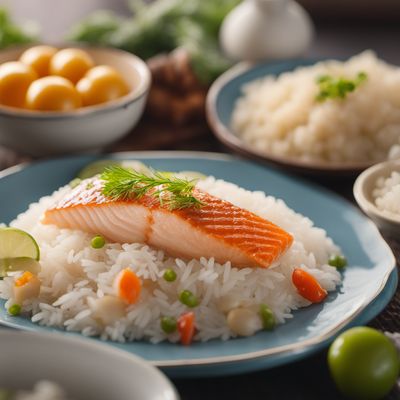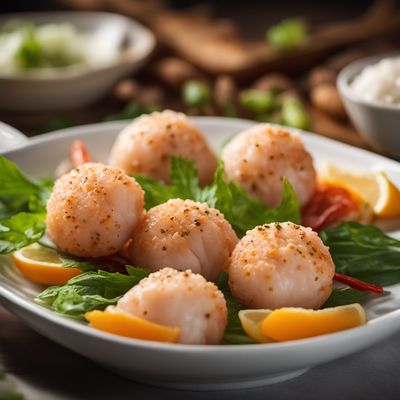
Ingredient
Fish and seafood based dishes
Oceanic Delights
Fish and seafood are highly versatile ingredients that can be prepared in numerous ways, including grilling, baking, frying, and steaming. They come in various forms, such as whole fish, fillets, shellfish, and crustaceans. Fish and seafood dishes are enjoyed in coastal regions and are an integral part of many cuisines, including Mediterranean, Asian, and Nordic.
Origins and history
The consumption of fish and seafood dates back thousands of years, with evidence of their importance in ancient civilizations like Egypt, Greece, and China. Fishing has been a vital source of sustenance and livelihood for coastal communities throughout history. Today, fish and seafood continue to be valued for their nutritional benefits and culinary appeal.
Nutritional information
Fish and seafood are excellent sources of high-quality protein, omega-3 fatty acids, vitamins, and minerals. They are also low in saturated fat and can be part of a heart-healthy diet. However, some species may contain higher levels of mercury or other contaminants, so it's important to choose sustainable and responsibly sourced options.
Allergens
Some individuals may be allergic to fish or shellfish, which can cause severe allergic reactions. It's crucial to be aware of any allergies or sensitivities before consuming fish or seafood-based dishes.
How to select
When selecting fish or seafood, look for fresh, firm, and moist flesh. The eyes should be clear, and the gills should be bright red or pink. Avoid any fish or seafood with a strong fishy odor or signs of discoloration. If possible, choose sustainably sourced options to support responsible fishing practices.
Storage recommendations
To maintain the freshness and quality of fish and seafood, store them in the refrigerator at temperatures below 40°F (4°C). Keep them wrapped in moisture-proof and odor-proof packaging to prevent cross-contamination. Consume them within a day or two for optimal taste and texture.
How to produce
Fish and seafood can be produced through commercial fishing or aquaculture. However, it is not recommended for amateurs to attempt fish or seafood production at home due to the specialized equipment, knowledge, and regulations involved.
Preparation tips
Fish and seafood can be prepared in various ways, depending on the desired outcome. Grilling or baking whole fish can result in crispy skin and moist flesh, while fillets can be pan-fried or steamed for a delicate texture. Shellfish and crustaceans are often boiled, grilled, or used in stews and soups. Experiment with different seasonings, marinades, and cooking techniques to enhance the natural flavors of fish and seafood.
Culinary uses
Fish and seafood are used in countless culinary creations, including fish tacos, seafood paella, sushi, fish and chips, bouillabaisse, and ceviche. They can be incorporated into salads, pasta dishes, curries, and stir-fries, adding depth and complexity to the overall flavor profile.
Availability
Fish and seafood are commonly available in coastal regions and areas with access to fresh water bodies. They are also widely distributed in supermarkets, fish markets, and specialty seafood stores. Availability may vary depending on the specific type of fish or seafood.
More ingredients from this category

Seafood salad
Ocean Delight

Fish and rice meal
A Nutritious Fusion

Prepared fish salad
Oceanic Delight

Fish balls
The Savory Delicacy from the Sea

Bouillabaisse
The Quintessential Seafood Stew

Fish and vegetables meal
Oceanic Delight: A Nutrient-Rich Fusion of Fish and Fresh Vegetables

Fish and potatoes meal
A Seafood Delight: Fish and Potatoes

Fishcakes
Savory Sea Delights

Seafood-based meals
The Bounty of the Ocean: Seafood-based Meals

Fish gratin
Creamy Seafood Delight: A Delectable Fish Gratin Recipe

Fish pâté
The Delicate Delight of Fish Pâté